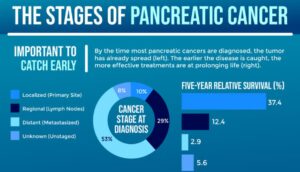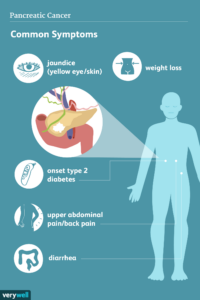


Pancreatic cancer, an enigmatic and often misunderstood ailment, quietly takes root in the pancreas, a vital organ tucked away in the abdominal region. This gland, which lies between the spine and stomach, manages the delicate balance of blood-sugar levels and contributes essential digestive enzymes. When cells within the pancreas undergo aberrant changes and uncontrollable multiplication, pancreatic cancer emerges, forming a tumour that can elude early detection.

Despite its relative obscurity, pancreatic cancer stands as a formidable adversary. Globally, it ranks 14th in incidence and 7th in mortality. In the Indian context, its prevalence is even more elusive, with rates ranging from 0.5-2.4 per 100,000 persons per year in women and 0.2-1.8 per 100,000 persons per year in men. However, these statistics don’t diminish its significance; in fact, current trends suggest that pancreatic cancer could be the second leading cause of cancer death in the United States by 2030.

Symptoms
Pancreatic cancer is problematic for its silent growth, avoiding early detection and making it a challenging disease. Its symptoms often remain latent until the tumour impacts other organs within the digestive system, complicating the diagnostic landscape.
Jaundice, marked by the yellowing of the skin, dark urine, and light-coloured stool, can be an early sign. Upper abdominal pain and middle back pain may follow, accompanied by fatigue, itchy skin, and a persistent feeling of nausea. Weight loss, diabetes, and the presence of blood clots can further signal the presence of pancreatic cancer. For those grappling with neuroendocrine tumours, symptoms might deviate, expressing themselves through diarrhoea and anaemia.
Despite the lack of early warning signs, healthcare providers may find challenges in reaching a conclusion as to whether the patient is diabetic or not. The subtlety of these symptoms often results in delayed diagnoses, allowing the cancer to progress to advanced stages, where it becomes even more challenging to treating it.
Diagnosis
Diagnosing pancreatic cancer requires a comprehensive approach due to its elusive nature, with early-stage tumours often eluding conventional imaging tests. Healthcare professionals may employ a combination of imaging techniques such as CT scans, MRIs, and endoscopic ultrasounds to visualize the pancreas and surrounding areas. Blood tests, including tumour markers, can provide additional insights.
Furthermore, the evolving research landscape actively explores genetic testing and innovative imaging methodologies for early detection. As the medical science strives for breakthroughs, there is hope that improved diagnostic tools will enhance the prospects of identifying pancreatic cancer in its nascent stages.
Treatment
Pancreatic cancer poses unique challenges during the course of treatment. Its early resistance to many conventional cancer drugs complicates therapeutic interventions. Treatment modalities often involve surgery, chemotherapy, and radiation, with the approach tailored to the stage and type of cancer.
Surgical options may include removing the tumour, a portion of the pancreas, or, in more advanced cases, the entire organ. Chemotherapy and radiation therapy may be administered pre or post-surgery to target remaining cancer cells. Immunotherapy, a burgeoning field in cancer treatment, is also under exploration for its potential in pancreatic cancer management.
Moreover, a disease marked by its stealthy progression and limited treatment options, awareness and early detection emerge as critical allies. Additionally, recognizing the urgent need for diagnostic and treatment advancements, ongoing research provides hope through emerging therapies and clinical trials. To combat this formidable adversary, fostering awareness and supporting scientific studies are paramount, promising improved outcomes in the battle against this challenging disease.
The author is the head of Molecular Biology National Reference Lab, Oncquest Laboratories Limited.